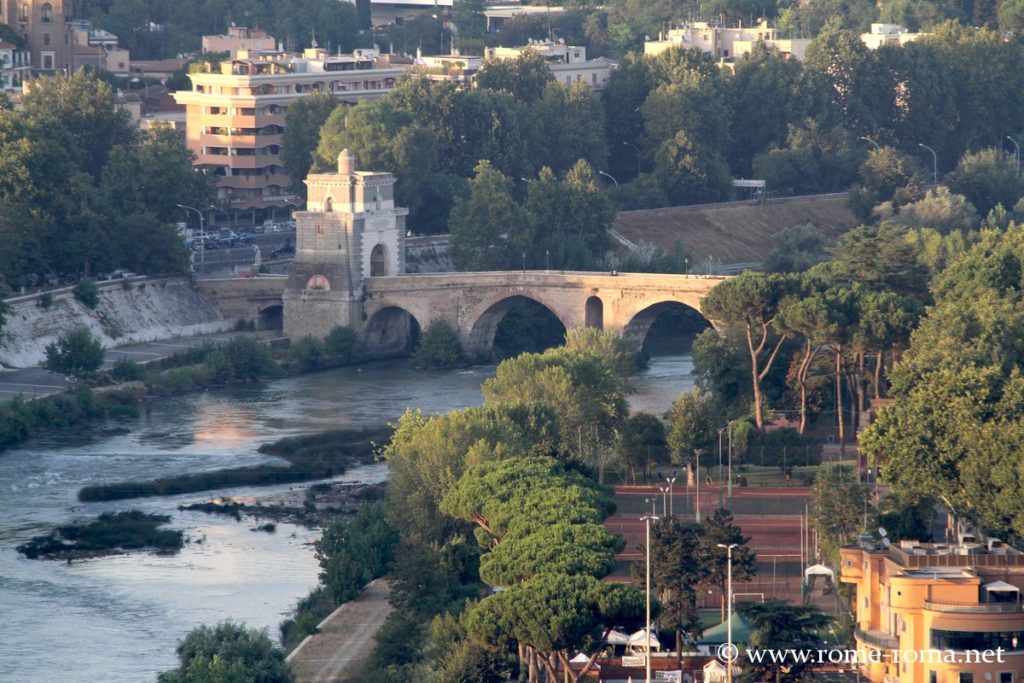The Della Vittoria district extends across a plain north of the Prati district and the Vatican, between Monte Mario and the banks of the Tiber. It is mainly a residential area, but also hosts many offices, institutional headquarters, audiovisual services, as well as the vast sports complex of the Foro Italico.
In the 1911 city plan, it was designated as Milvio district, in reference to the bridge of the same name. In 1930, it was officially given the name Della Vittoria in memory of the victory of the First World War. Under the Fascist regime, from 1938 it was sometimes referred to as delle Vittorie district, in connection with the Ethiopian conquest, before returning to its current name after the war.
Landmarks of the district
The southern boundary, marked by Via delle Milizie, separates it from the Prati district. It consists of a residential fabric interspersed with large avenues and squares, as well as various institutes, radio and television headquarters (including RAI, the Italian Radiotelevision), and some museums such as the house of Alberto Moravia or the Casa Balla.
Further north, the Foro Italico, built between 1928 and 1938, includes Rome’s main sports facilities: the Stadio Olimpico, tennis courts, swimming pools, the Stadium of the Marbles, the Mussolini Obelisk, and various university buildings erected in the style of the Fascist era.
To the west, Monte Mario, the highest point in the city, offers a wide panorama over Rome and hosts an old observatory, a military fort, a natural park, and walking paths. Further north, on another elevation, lies the French Military Cemetery, inaugurated after the Second World War and enjoying a privileged position.
Historical Overview
The Battle of the Milvian Bridge took place in 312 AD near the bridge, when Constantine defeated Maxentius for the imperial title. According to tradition, Constantine had a vision of a cross before the confrontation, a vision which, after his victory, led him to turn towards Christianity.
The flat land, close to the gates of Rome, often served as a camp for the city’s besiegers: the Vandals of Genseric, the Goths of Odoacer, the Byzantines of Belisarius, or even the Landsknechts during the sack of 1527.
Villas were built here from Antiquity, such as that of the poet Martial. During the Renaissance, the Strozzi family built a villa at the foot of Monte Mario, and the Medici the Villa Madama.
In the 19th century, the area was known as the Parade Ground, used for military training. Urbanization began at the end of the century and intensified around 1911, during the Exhibition of the Fiftieth Anniversary of Italian Unification, when many streets were named after figures of the Risorgimento. The villas along the Lungotevere then adopted Neo-Baroque and Neo-Renaissance styles.
The 1930s marked a new phase of construction under Fascism, with the Farnesina (Ministry of Foreign Affairs), the Palazzo delle Poste, and later, the headquarters of RAI (1950–1960). Between 1927 and 1932, at the foot of Monte Mario, the Forum Mussolini was built, today known as the Foro Italico (Italic Forum), which brings together Rome’s main sports facilities in a project by Enrico del Debbio.
Monuments and sites of the district
Other sites
Sites of the Della Vittoria and Monte Mario district
Please add some markers to your posts before using this shortcode.




